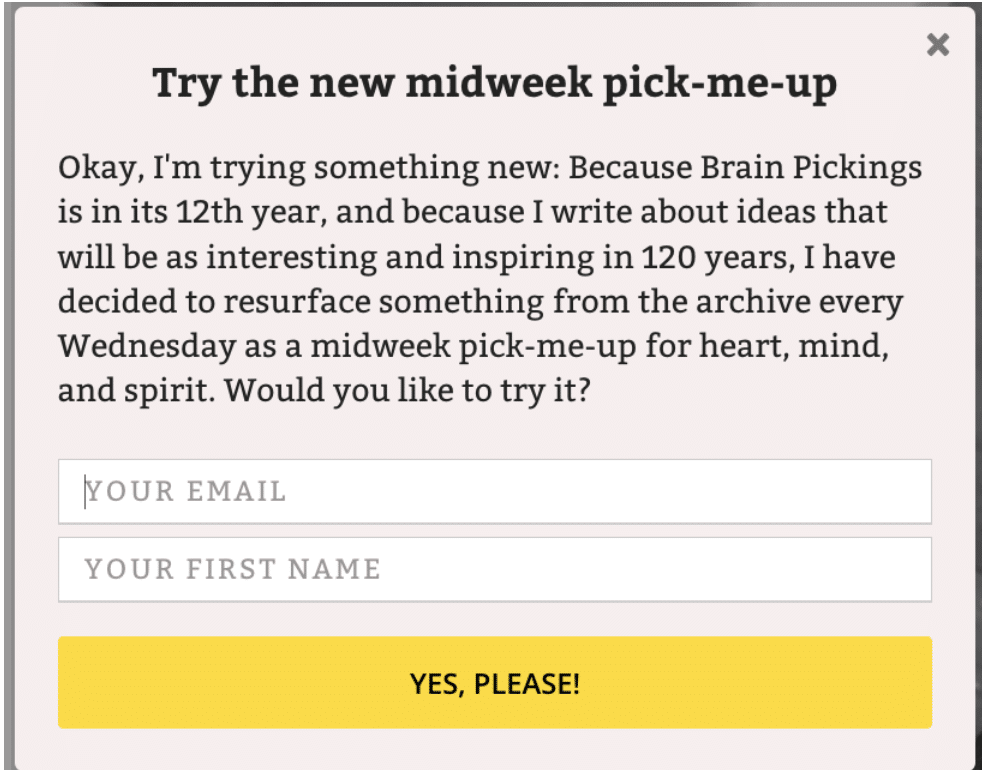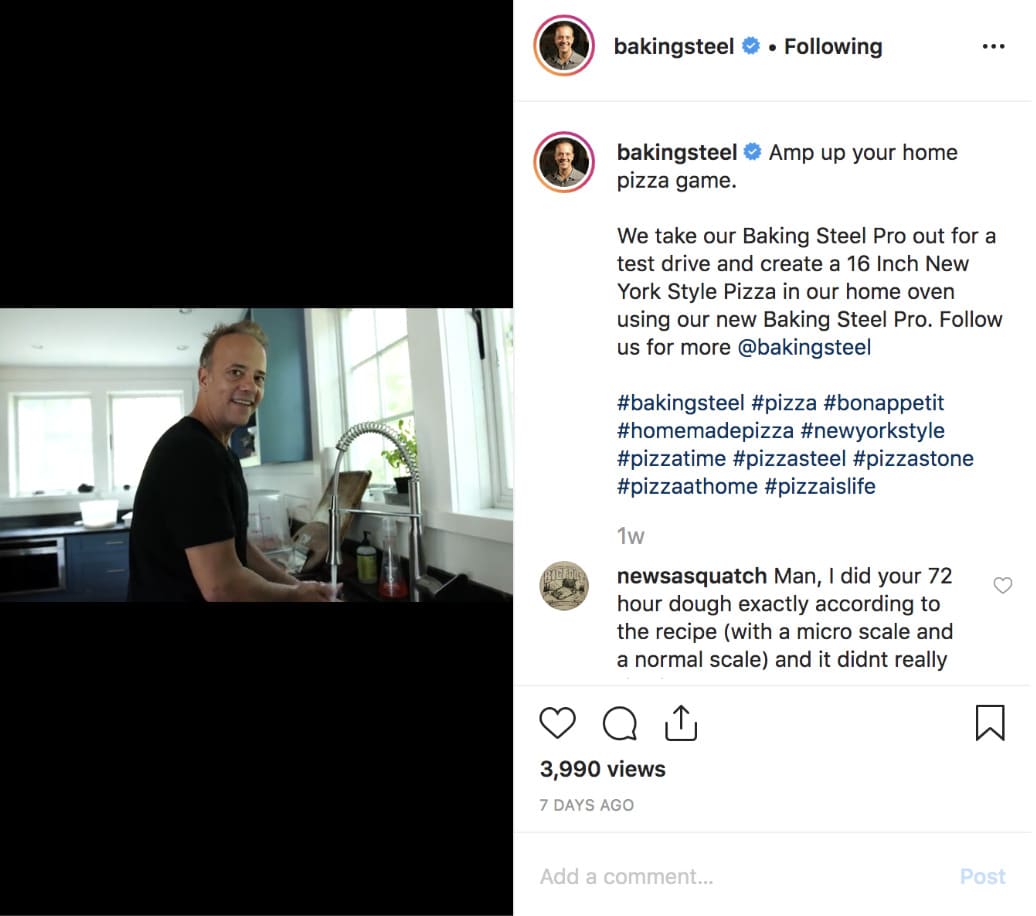3 Things your small business can do to flex powerful marketing muscles [with examples]
One of my favorite New Yorker cartoons of all time is by Peter Steiner.
It depicts two dogs. One is seated in front of a computer, typing; he comments to the other, seated on the floor, “On the Internet, no one knows you’re a dog.” (Fun fact: The cartoon has become the most reproduced cartoon in New Yorker history.)
That applies to small businesses, too:
On the Internet, no one knows you’re a small business.
You have the same sales and marketing opportunities online that your larger competitors have. That’s true even if you have a more modest budget and fewer resources.
At the same time, you have an opportunity the big guys don’t: You have the passion of an owner or manager who puts heart and soul into the business. Your bigger competitors can’t come close to that.
That might sound too soft—like a nice-to-have, not a real business asset. But in my experience, it’s a massive differentiator.
So what’s that mean in practical terms?
Small and midsize businesses should think about three ways to flex their tiny-but-powerful marketing muscles.
1. Obsessive focus. Too often, the smaller companies I talk to suffer from a lack of tactical focus. (The bigger ones do, too. But that’s an article for another day.)
So... FOCUS. Don’t scatter your marketing efforts across many different channels and opportunities. Focus on being ridiculously good at one or two, consistently.
Your email newsletter would be my vote, especially now. I give 11 reasons why your email newsletter is more important than ever here.
It doesn’t HAVE to be your email newsletter of course. But choose wisely.
Exhibit A:
Brain Pickings for years focused on a single weekly email. I get a lot of email—but the Brain Pickings email has consistently been one of my favorite reads of the week.
It’s substantive and weighty, and it hits my inbox at an appropriate time: smack in the middle of the weekend, on Sunday morning. That’s by design, because the Brain Pickings email is long, contemplative reading—perfectly suited to a slow Sunday morning.
After 12 years of publishing a Sunday newsletter, Brain Pickings’ Maria Papova didn’t switch gears and launch a webinar program or a podcast; instead she doubled down on what was already working: She launched a second newsletter.
That second newsletter publishes on Wednesday. Even better: That newsletter is evergreen content, because it pulls from the vast archives of Brain Pickings.
Here’s the pop-up marketing it on her site:
Takeaway for Marketing: Sometimes in Marketing we tend to overcomplicate things. We look at the bright and shiny—Should we launch an Alexa app? Should we be in IGTV?—instead of delivering a better experience on the thing that makes the most sense for your audience.
Ask yourself: If your audience loves your content, how can you build on what you’re already doing or already have… instead of reinventing the wheel? How can you improve or expand that experience, instead of creating something 100 percent brand new?
2. Slow-burn patience. Great marketing is a slow game. Building a business takes time.
Take a long-term view of your business, not a quarter-to-quarter view.
When you think of your customers with the long-term in mind, you make decisions that create more sustainable relationships. That, in turn, creates a more sustainable business.
This fall I’ve been thinking and talking about a slower, more sustainable, longer-lasting approach to your marketing. You can see a bit of that here.
Exhibit B:
Amanda Todorovich leads the content marketing programs for The Cleveland Clinic. The goal of the healthcare organization’s marketing programs is not to sell its hospitals as much be a health resource to those seeking health information on Google—and then “answering their questions with the best page on the Internet,” Todorovich told me.
From True North Custom, a content marketing agency:
“By sharing heart-healthy recipes, exercise tips and the hospital’s view on hot topics like Is It Possible to Become Addicted to Social Media?, the hospital builds trust and long-term relationships that drive brand loyalty. Todorovich says this approach to content marketing requires a commitment to a long-term, consistent strategy that revolves around the audience. She adds that it isn’t easy and doesn’t happen overnight.”
Takeaway for Marketing: A long-term approach doesn’t mean little-to-no results. Instead, it means managing expectations internally, as well as identifying and communicating your long-term timeline. Base your ideas and plan on data, not assumptions.
Ask yourself: Are you making decisions for your organization based on long-term results that compound over time?
3. Show your face. Tone of voice can be a great differentiator for your company. (I wrote about that here.)
And so can your actual voice on video. In our Instagram-, Facebook Live-driven social world... don’t be invisible. Don’t let your company not have a face.
Put yourself front and center. Get on video—especially if you’re the owner or founder or main shareholder.
Let your customers see you. Let them look into your eyes. Let them see that this is a real business with real people with a real personality and point of view.
Exhibit C:
Andris Lagsdin has a small company outside of Boston called Baking Steel that manufacturers and sells flat metal baking surfaces. His products will give your pizza the best crust of its life. It’s an awesome product. (I own two.)
Andris’s face is front and center: On Instagram. On Instagram Stories. On YouTube. On Facebook. In his email newsletter.
Andris knows that his obvious passion for the best pizza crust on this planet is not only what drives the company… but also what inspires his audience to buy. You can see and you can feel his joy, his commitment… and his nerdy, glorious love for great pizza!
You don’t need to be seen everywhere (See #1). But you need to be seen at least somewhere. Regularly.
Source: Baking Steel
Takeaway for Marketing: Show your customer who you are. What you look like. Where you work. And what that feels like.
Ask yourself: If your customer comes into your shop or meets you at a trade show, would they recognize you? Are you personalizing and humanizing your own business?
***
So there you have it: Obsessive focus. Slow-burn patience. Your face.
Try incorporating more of all three in your 2020 planning.
MOST RECENT ARTICLES
Want to engage your audience and grow your brand? Try Emma's robust easy-to-use product today.














